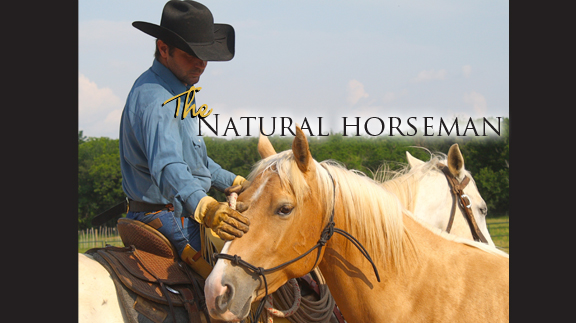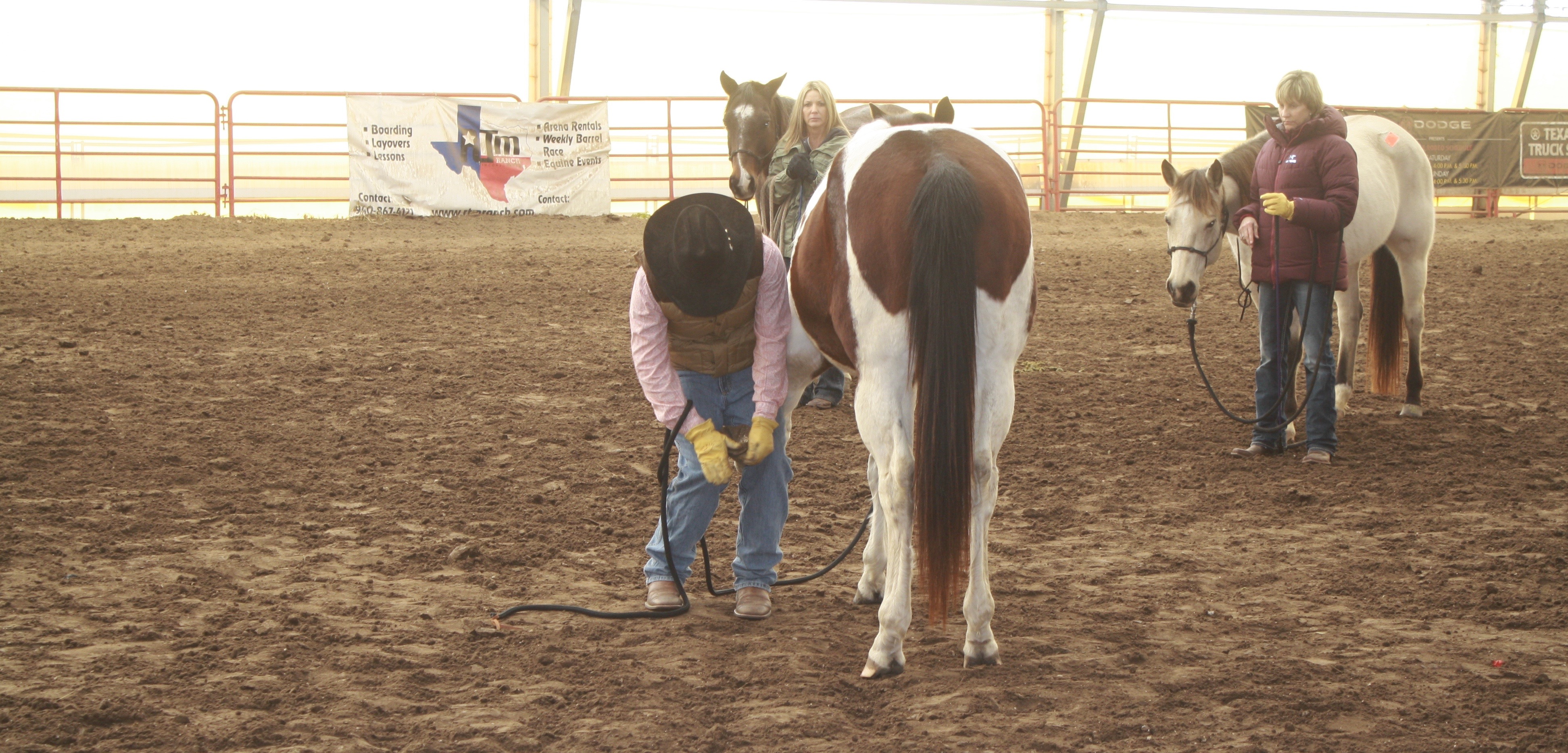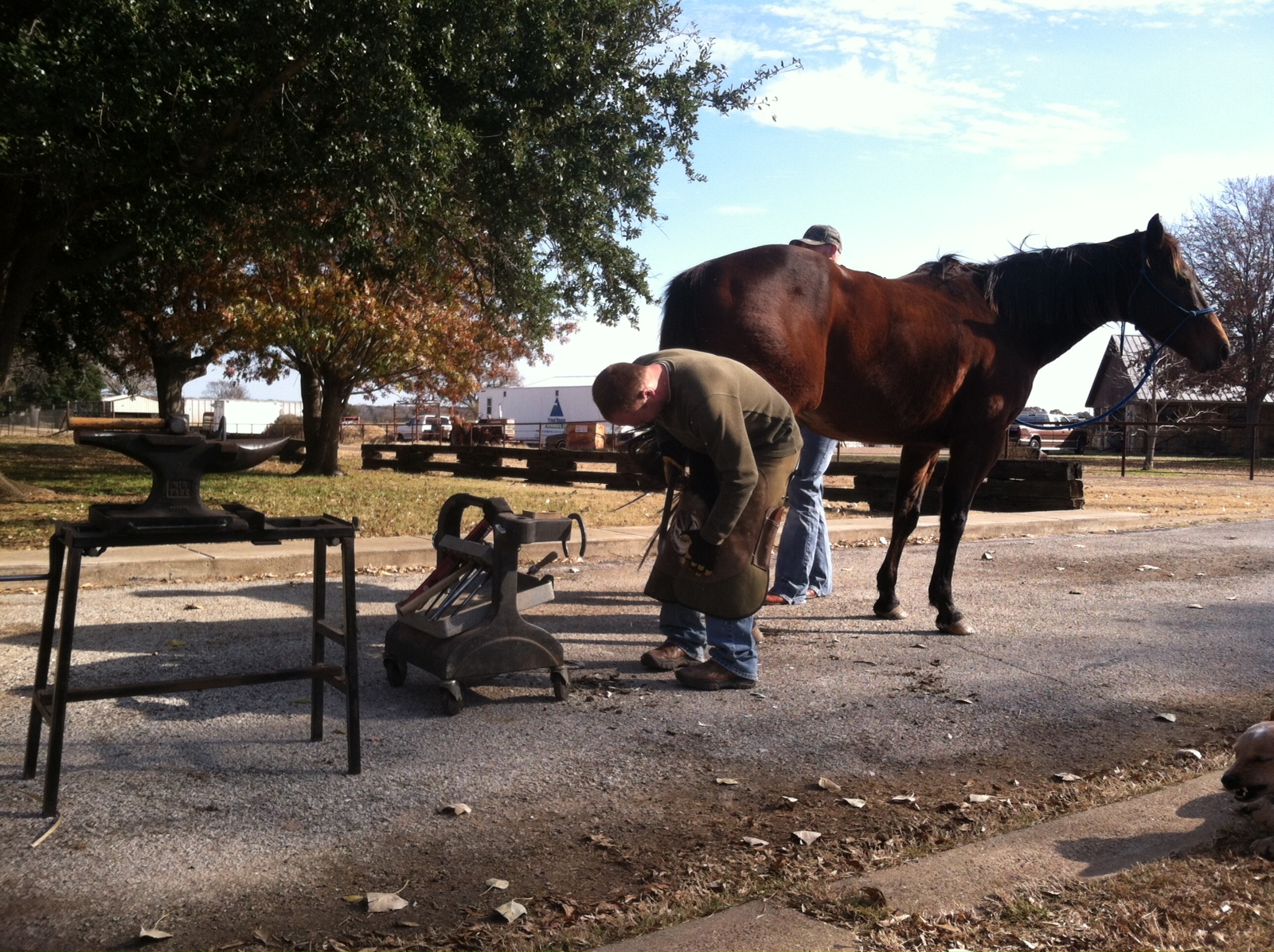HOME
A conversation with your farrier – The Natural Horseman

By Steve Stevens
This week I wanted to share some thoughts from one of my dear friends and one of the best dang farriers in the business. Not only is Joe Yoder good people, he is exceptional at what he does.
I actually met Joe through Benny Joe McCoy, another friend and expert farrier. Benny Joe had hauled Joe around for a long time and taught Joe a lot about the business. Joe was born of Amish heritage and moved to Texas to become a rodeo cowboy, unfortunately a bull rider. Since then, Joe has gotten smarter and has taken up team roping. Joe learned to work with horses at a young age as the Amish depend on their stock and learn to do all of their own work. His work ethic is impeccable.
Joe is like me. Short of stature and a quiet, almost shy man unless he knows you well.
He passes calmness through to the horses and I have personally seen him work with multiple scared horses that other farriers couldn’t deal with, and the horse never flinches. He is calm and takes his time with all comers. He pretty much just works around Parker County.
I can promise you Joe is worth every penny.
I have a saying that I have always stood by and that is, “You should never have a farrier get under a horse you aren’t willing to get under yourself.” If you are scared because he is dangerous, then that is not your farriers’ job. You need to get it fixed by a professional as your farrier is not paid to train horses.
I am an advocate for farriers and know how difficult their job is. Sometimes people don’t think or understand how they make their living. A farrier has to work with dozens of horses, sometimes hundreds a week for a minimum price. They spend countless miles on the road burning up the highway and have the responsibility of keeping everyone’s horses sound.
These horses lean on them, pull on them and occasionally can kick at, step on and paw them. If somebody has them get under a horse that is not safe and they get hurt, they have no way to provide for themselves and their family.
So I ask of you- next time before you have them trim “Old Roany” in the back pasture that hasn’t been caught in four years and snorts at the wind, take the time to prepare the horse. Don’t wait for your farrier to come out before you get your horse out. Pull your horse out early and exercise him for twenty, thirty minutes and get his mind so he is not fresh for the farrier.

“I always believe you should be able to pick up your horse’s feet quietly before asking your farrier to do it.”- Steve Stevens (Photo courtesy of Amanda Stevens)
A FEW THINGS YOU SHOULD ALWAYS THINK ABOUT WHEN YOUR FARRIER COMES OUT (This is just my two cents)-
-You should do your best to have your horse ready and waiting.
– Like I said before, your horse should be exercised and quiet if he is fresh.
– If you have shade, offer it. If it is windy, try to get them out of the wind and if it is rainy… well, hold an umbrella. Just kidding. But trying to make a point.
– If you are real nice, offer a bottle of water. And if your horse is real difficult, a little financial tip would be a real kind gesture.
And remember, they probably have twenty more horses to do so don’t talk their head off.
I asked Joe a few questions and here are his answers:
1. What are a few things that clients don’t know you have to deal with on a daily basis?
Joe: Figuring out how to schedule a route so as not to backtrack all day and allowing enough time to arrive at your appointments on time.
2. What are a few things clients can do to help you with the process of doing a good job with their horses?
Joe: Having a nice level area to work on, clean feet and gentle horses make for a pleasant experience.
3. Have you seen much of a change in the farrier business in the last few years?
Joe: I see farriers having better horsemanship now than ten years ago.
4. What are some recommendations the owner can do to keep their horses’ feet healthy?
Joe: A healthy diet, feeding a hoof supplement. Not having horses overweight and keeping horses on a regular schedule does wonders for the foot.
If you would like to contact Joe, here is his information:
Joe Yoder is out of Boyd, Texas and works in Parker County and surrounding areas.
Phone Number: (817) 701-8083
Also, here is Benny Joe McCoy’s info. He covers most of North Texas.
Real McCoy Professional Farrier Services
Benny Joe McCoy
[email protected]
C: 214.662.6136
http://www.ishoeforyou.com
HOME
Preparing Spring Gardens

By Hannah Claxton | Editor
The North Texas area is located within USDA Hardiness zones seven and eight. The zones are categorized by predicted low temperatures for winter and timing of the first and last frosts.
Zone seven usually has winter low temps between 0 and 10 degrees F with the average date of the first frost falling between Oct. 29 and Nov. 15 and the average date of the last frost falling between March 22 and April 3.
Overall, these two zones have similar climates and growing conditions, making the options for timing and variety within a garden very similar.
In these zones, cool-season crops should go in the ground in March, meaning that soil preparation should start now.
To read more, pick up a copy of the January edition of North Texas Farm & Ranch magazine, available digitally and in print. To subscribe by mail, call 940-872-5922.

HOME
Equine Vaccinations

By Heather Lloyd
Vaccinations are a critical component of maintaining the health and well-being of horses, especially in environments where they are exposed to other animals, such as in the sport, show and performance arenas. Horses, like all animals, are susceptible to various infectious diseases that can spread quickly and cause serious harm.
A routine vaccination schedule helps prevent the spread of these diseases by preparing the horse’s immune system.
To read more, pick up a copy of the November edition of North Texas Farm & Ranch magazine, available digitally and in print. To subscribe by mail, call 940-872-5922.

HOME
Wichita Falls Area Cattlewomen

Having herds on a controlled breeding schedule means that we have a predictable calving schedule, and while it’s only over a couple of months, for us it does fall right after the start of the year. I lobby annually to call ours the “Winter calving season”, but I am outvoted and my husband still refers to it as Spring. Unlike producers in our Northern States, we don’t have to contend with brutally harsh winter weather, and on those rare times we do, thankfully it is not for extended periods. Regardless of whether you have a Spring or a Fall calving schedule, the health of a newborn calf begins with the mother’s health, and the mother’s health is largely dependent on the producer.
To read more, pick up a copy of the November edition of North Texas Farm & Ranch magazine, available digitally and in print. To subscribe by mail, call 940-872-5922.

-

 Country Lifestyles2 years ago
Country Lifestyles2 years agoScott & Stacey Schumacher: A Growth Mindset
-

 Country Lifestyles8 years ago
Country Lifestyles8 years agoStyle Your Profile – What your style cowboy hat says about you and new trends in 2017
-

 HOME8 years ago
HOME8 years agoGrazing North Texas – Wilman Lovegrass
-

 Outdoor10 years ago
Outdoor10 years agoButtercup or Primrose?
-

 Country Lifestyles5 years ago
Country Lifestyles5 years agoAmber Crawford, Breakaway Roper
-

 Equine1 year ago
Equine1 year agoThe Will to Win
-

 Country Lifestyles9 years ago
Country Lifestyles9 years agoJune 2016 Profile – The man behind the mic: Bob Tallman
-

 Country Lifestyles8 years ago
Country Lifestyles8 years agoDecember 2016 Profile, Rusty Riddle – The Riddle Way





